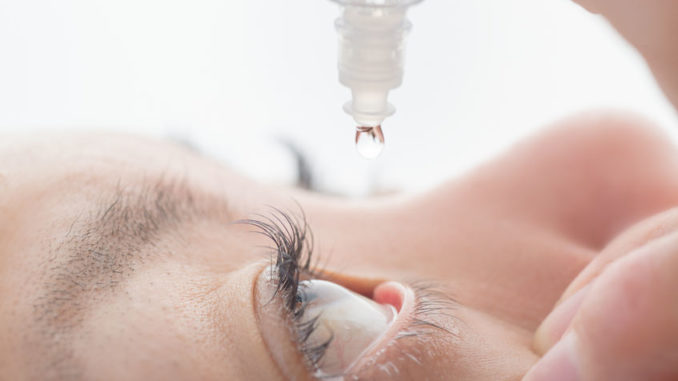
Autologous Eye Drops for Dry Eye
By Donna S. Barsky, PharmD
Dry eye can be a severe problem for many people and can be caused by several things, including cataract surgery, Lasik procedures, and just reduction in tear production.
Our tears have antimicrobial, nourishing, mechanical, and optical properties. They contain proteins, growth factors, fibronectin, and vitamins to support proliferation, migration, and differentiation of the corneal and conjunctival epithelium. A lack of these epitheliotropic (repairing) factors—for example, dry eye can result in severe ocular surface disorders such as persistent epithelial defects.
There are many commercial eye drops available in today’s market; however, in-vitro cell culture experiments showed that corneal epithelial cell morphology and function are better maintained by serum than by pharmaceutical tear substitutes.
Eye drops made from autologous serum are a new therapeutic approach for ocular surface disorders, such as persistent epithelial defects or severe dry eyes intractable to conventional therapy. The presence of growth factors and vitamins in serum eye drops might also have a true epitheliotropic potential for the ocular surface.
The biggest contraindication (reason to not use) is a positive serology for HIV, Syphilis, Hepatitis B (HBV), and Hepatitis C (HCV). For all others, the use of one’s own serum can be a major positive in corneal disorders. In fact, they are by nature non-allergenic and their biomechanical and biochemical properties are like normal tears.
The physician can order these for patients if they have tried other commercial medications and found no relief. First, the physician can order a blood draw for the serum, as well as a prescription for the percent that the physician deems necessary for good results.
Most labs will not let the blood sit for two hours to clot; therefore, they must spin in a centrifuge for a minimum of 30 minutes. For most labs, that would require spinning through two cycles since most of the centrifuge units are calibrated to a 15-minute cycle. After spinning, the vials need to be packed in a cooler and brought to the pharmacy for processing. For most individuals, a 100ml blood draw will deliver 30-35ml of serum for use in eye drops. If there are any particles of blood floating in the vial, the vial cannot be used because one drop of blood in an eye drop can be detrimental to the cornea, especially if the patient wears contacts.
On another note, it is amazing to see, when the serum arrives, how clear or cloudy the fluid can be. This all depends on the total cholesterol that a patient carries. The higher the cholesterol count, the cloudier the serum becomes. Cholesterol in serum is like the cream floating on top of the whey at the dairy.
When the pharmacy receives the vials, the serum is immediately drawn from the vials. These drops must be processed within 48 hours to be viable. Also, if we leave the serum in the vials, there is a possibility that some of the blood that has been separated may contaminate the serum if left too long.
When the serum has been prepared, it is dispensed into small eye-dropper vials for usage and after seven to 10 days, discarded. The remainder of the product is kept in the freezer until needed by the patient. The pharmacy will only process enough serum to last the patient up to six months, any longer may put the patient at risk of contamination or degradation of proteins in the serum and thus reduction of healing.
If dry eyes have been a problem with you or anyone you know, please contact us at Texas Star Pharmacy, 3033 W. Parker Rd., STE 100, Plano, TX, 75023. Or call us at 972-519-8475, EXT 3 for any information about autologous eye drops.



